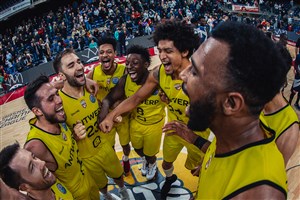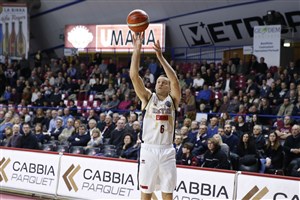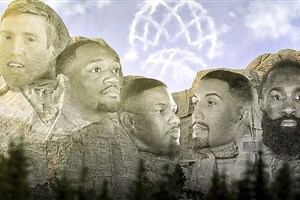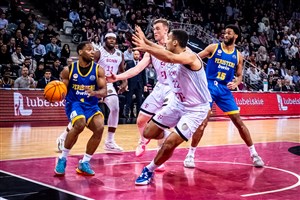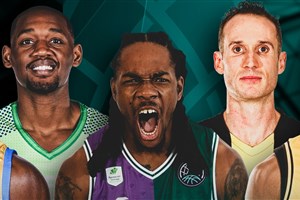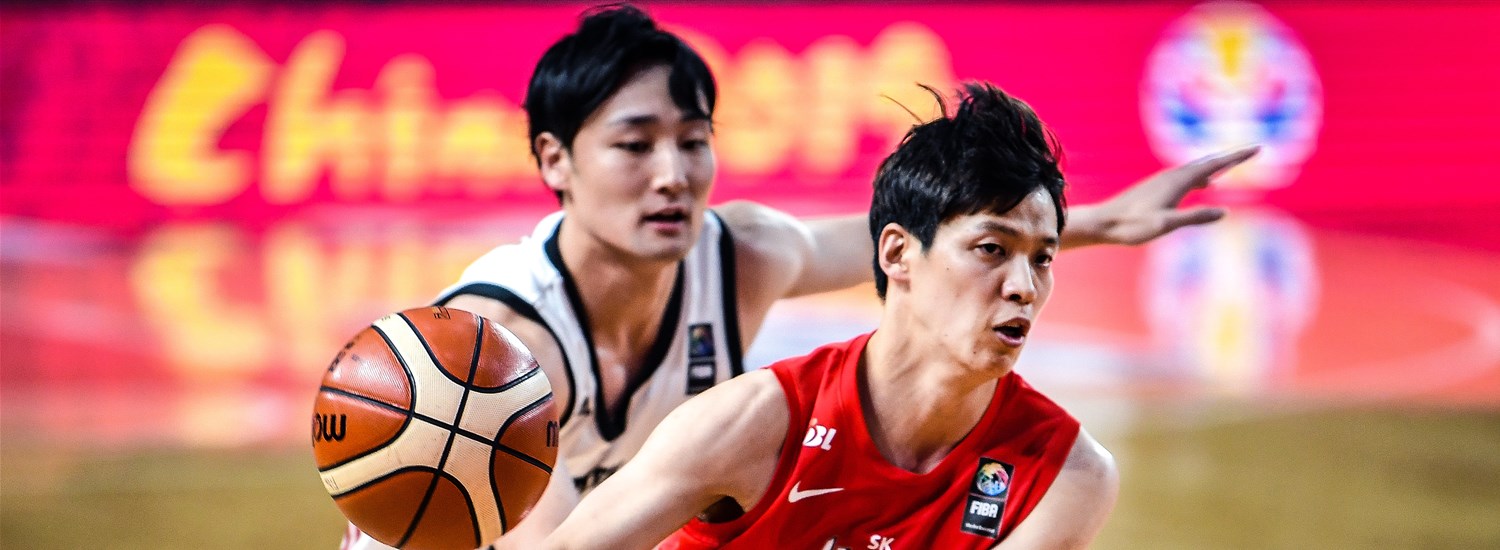
My favorite pro leagues in Asia
MANILA (Enzo Flojo's Asia on My Mind) – The best players in Asia are gearing up for the next Asian Qualifiers window by sharpening their aims in some of the best professional leagues in the continent.
Asian basketball has really skyrocketed these past few years, not only in terms of having competitive national teams but perhaps even more so in terms of having well-organized and well-run professional leagues that have brought the game we all love closer to the fans.
It is in this spirit of celebrating Asian professional basketball that I will now detail my favorite professional basketball leagues in the continent.
KBL
View this post on Instagram
Let's begin with the Korean Basketball League (KBL), which for me, certainly seems like the best-run league in Asia. With teams like Jeonju KCC Egis and the Seoul Samsung Thunders dating as far back as the late 70s, the KBL certainly has a storied past and dedicated fans. Basketball purists can also very easily fall in love with the fluidity and style of play in the KBL, which is predicated on crisp ball movement and smooth perimeter shooting. One won't see many ankle-breakers or alley-oop dunks here, but if you love the sound of twine getting tickled, then this is the league for you.
It's also amazing how the league has achieved relatively great parity among its 10 teams. In the past decade, for instance, the KBL title has been wrested by 5 different teams, with a total of 8 teams making the finals in that same stretch of time.
The KBL is also a great example of teams being supported both by the local community and big corporations as every squad is based in a different city (the exception is Seoul with 2 teams) and supported by a major corporate partner. A clear-cut example is the Ulsan Hyundai Mobis Phoebus, who are based in the coastal city of Ulsan in southeast Korea but counts automotive giant Hyundai as their major sponsor.
CBA
Of course, one cannot talk about the Asian pro hoops scene and leave out the Chinese Basketball Association (CBA). Founded in 1995, the CBA may not be the oldest professional league in Asia, but one may definitely argue that it has the highest talent level outside of the NBA and Europe. As a testament to this, some former NBA All-Stars have donned CBA kits, most notably Stephon Marbury (Beijing Ducks), Tracy McGrady (Qingdao Eagles) and Gilbert Arenas (Shanghai Sharks).
At 20 teams, the CBA currently has the largest number of competing squads among the top tier leagues in Asia, with most following an interesting naming convention - their city base followed by their corporate partner and their (more often than not) animal nickname like three of the league's winningest teams: the Guangdong Hongyuan Southern Tigers, the Beijing Shougang Ducks and the Liaoning Scale Industry Flying Leopards. Perhaps the only exceptions are the Bayi Rockets, whose players are historically from China's national army.
The CBA's main draw is its being the most star-studded and high profile league in Asia. Aside from former NBA players, future NBA draft picks and bona fide superstars from Europe, the Americas and even the best Asian players outside China have become fixtures in the league. This list includes burly Serbian center Miroslav Raduljica, Lithuanian big man Donatas Motiejunas, Argentine icon Luis Scola, Iranian behemoth Hamed Haddadi and naturalized Filipino Andray Blatche.
B.League
Japan, for their part, have also made a lot of headway in terms of rejuvenating the professional basketball landscape in the country. It all started from a FIBA suspension the Japanese Basketball Association (JBA) received in 2014 due to their inability to properly reorganize the domestic leagues. Borne from this, the then rival top tier leagues - the Japan National Basketball League and the BJ League - merged into what is now known as the B.League.
Right now, the B.League has a whopping 46 teams in its roster, though these are classified into three divisions, with the elite first division having 18 clubs further divided into 3 different conferences. Much like the KBL and CBA, B.League teams, especially those in the first division, are based in different cities but are backed by big corporations. Examples include: the Tokyo Alvark sponsored by Toyota, the SeaHorses Mikawa based in Kariya and sponsored by Aisin and Okinawa's Ryukyu Golden Kings backed by Zenhoren Co.
What makes the B.League quite unique is how they allow up to 3 foreign players per team (naturalized Japanese and foreigners born in Japan aren't included) in the first division. This has greatly increased the level of competition in the league, and it has helped local players raise their game, too.
For me, the best thing about the B.League is how it is able to have a wide reach, especially with its 46 teams. This expansive scope has the potential to spur grassroots development even further, which should help the JBA's programs for their national teams as well.
ABL
Perhaps one of the youngest leagues in Asia, the ASEAN Basketball League (ABL) may not yet have the history or the stature of other more established competitions, but it has become a great model for using professional basketball as a means to raise the level of play not just in a single country but across different countries in a region.
It is the only inter-country professional basketball league in all of Asia, and it truly brings basketball to the fringes, with teams established in emerging basketball territories like Macau (Macau Black Bears), Vietnam (Saigon Heat) and Singapore (Singapore Slingers).
That it has actually pulled off having home-and-away games across national borders has been equally admirable. It's no joke, of course, having to face tremendous logistical challenges in shuttling teams from one country to the next, but the ABL has been quite successful.
It has also attracted top-level international basketball talent, with national team mainstays like Ray Parks, Jr., Christian Standhardinger and Matthew Wright of the Philippines having seen action as well as Chinese Taipei's Tien Lei, Lee Hsueh-Lin and Chen Shih-Nian. Even Puerto Rican national team stars Renaldo Balkman and Peter John Ramos have played!
LBL
View this post on Instagram
Out in West Asia, the league on which I really keep tabs is the Lebanese Basketball League (LBL). Founded in 1992, the league has been home to some of Asia's biggest stars and has carried a rich history.
The most notable players to have seen action in the league are living legend Fadi El Khatib, playmaker extraordinaire Elie Mechantaf and one of the best naturalized players in Asian hoops history, Joseph Vogel. Other big names who've played in the LBL are naturalized Jordanian Rasheim Wright, current star NBA center Hassan Whiteside, Palestinian icon Sani Sakakini and super Syrian scorer Michael Madanly.
The LBL has some of the most passionate basketball fans in all of Asia and has legendary rivalries, most notably the one between its two winningest teams - Sporting Al Riyadi Beirut and Sagesse Club - which is dubbed the Derby of Beirut.
PBA
Last but not the least, of course, is the professional league in my own country, the Philippine Basketball Association (PBA), which prides itself in being the very first professional basketball league in the world outside of the NBA.
As such, the PBA is one of the oldest basketball leagues in the globe, having been founded in 1975. It has gone through several major transitions and weathered major storms, and is an undeniably major pillar of Philippine hoops.
Now though many may criticize it for having blatantly skewed parity and an almost unbearably long season, the PBA remains an integral part of the sport's fabric in the country. It embodies - quite literally - how "basketball never stops" in the Philippines, and though that in itself poses a lot of challenges for the national federation (the Samahang Basketbol ng Pilipinas), the PBA also provides a potentially fruitful career path for Filipino players who are resilient enough to rise through the ranks.
Enzo Flojo
FIBA
FIBA's columnists write on a wide range of topics relating to basketball that are of interest to them. The opinions they express are their own and in no way reflect those of FIBA.
FIBA takes no responsibility and gives no guarantees, warranties or representations, implied or otherwise, for the content or accuracy of the content and opinion expressed in the above article.

